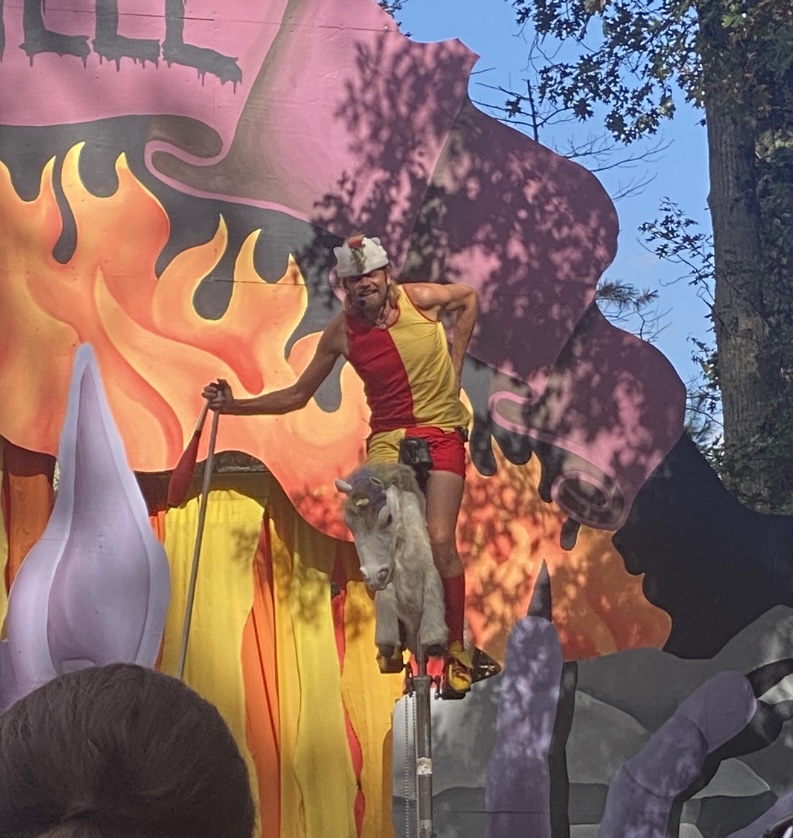The Unicycling Unicorn: A Modern Spectacle?
By Abigail Levasseur
After browsing the King Richard’s Faire website, I discovered that there would be unicorns. I wasn’t sure if “unicorns” meant white horses with tie-dye tails, ponies with horns, or costumes similar to the unicorn outfit I wore for halloween in 2007, but I was nevertheless intrigued to see how the festival could incorporate the majestic creature.
Briefly, it’s important to know the context of unicorns in medievalism. These mythical creatures are said to be ferocious and only tamable by virgin women, because they both possess “purity.” Additionally, as depicted on fourteenth century tapestries, unicorns possess healing powers and everlasting life, two characteristics of Christ. Click here for more information.
At King Richard’s Faire, the first performance that caught my eye on the itinerary was the “Unicycling unicorn.” The performance was led by a man wearing a red and gold striped jester outfit. He began by juggling torches to capture the audience’s attention and then transitioned to riding his ten foot unicorn-unicycle. The unicorn seat looked like a sad, dirty, old version of Agnes’ fluffy unicorn in the Despicable Me cinematic trilogy. It was puny, had a saggy belly, dusty “white” fur, a wimpy rainbow tail, and a creepy head that was only capable of looking at the ground. The gangly unicorn was the antithesis of “pure.”

It’s clear that the Unicycling Unicorn’s aim was to create an engaging spectacle, not to impress the unicorn lovers in the audience. The aspect of using a unicorn was more about the invention of a “punny” name than including a majestic creature with medieval roots. When moderns think of “medieval times,” they may think of death-defying performances like jousts, battles, and anything involving fire and metal weapons. The act of riding a ten-foot unicycle and juggling torches accurately provoked the emotions of fear and amazement in the audience because these dangerous skills are only seen in a controlled environment. The surrounding woodlands, small stage, lack of medical personnel, and the performer’s uncertainty made the environment seem less controlled, for if a flaming torch slipped or the unicycle collapsed, there were no ambulances, doctors, or technological devices on standby to save the day. These safety measures are largely installed in theaters/showrooms in Providence, but not in the forest of Carver. The removal of modern safety effectively transports the audience back in time and elevates both their adrenaline and concern — features of a proper spectacle.
In medieval times, the unicycling jester would probably have been taken less seriously, especially with jousters and sword-fighters taking the stage daily. Entertainment jobs for the purpose of spectacle and humor were more “feminine” compared to their “knightly” counterparts. In fact, Wamba, the jester in Ivanhoe, was subject to servitude for his “sub-par” skills. In modern times, especially with children around, comedy acts have been deemed more family-friendly, and therefore fitting for the King Richard’s Faire. Lastly, the act was on par with medieval sexism, for when the jester needed four assistants to hold his unicycle in place, he purposely asked for four “male” volunteers. His mission was to find individuals of both height and strength. I’m confident I could have held the unicycle just as steady, if not steadier, than the forty year-old father already three beers deep. But I was perfectly fine not helping.





